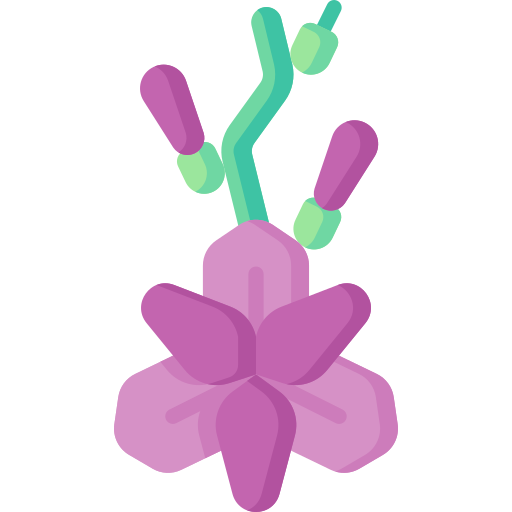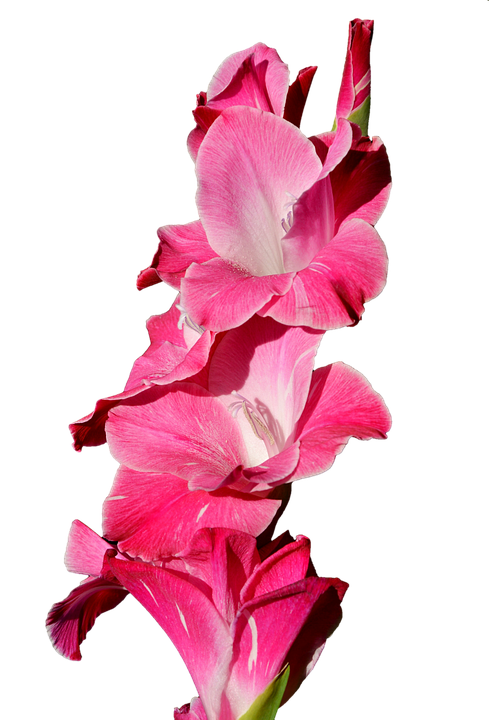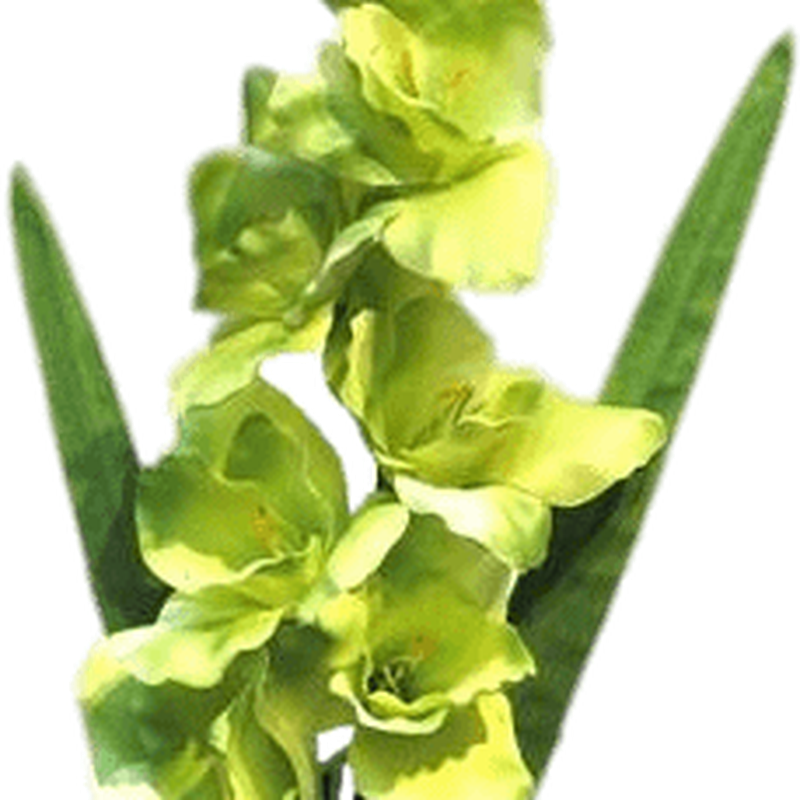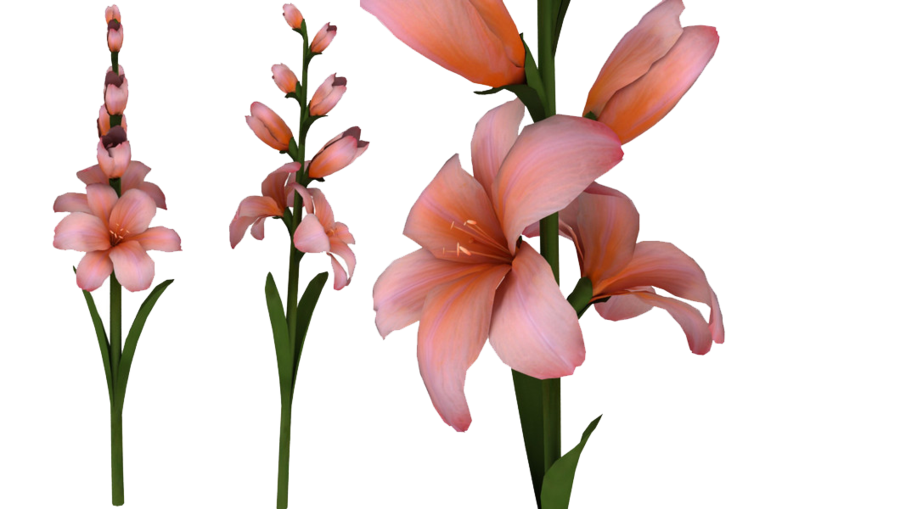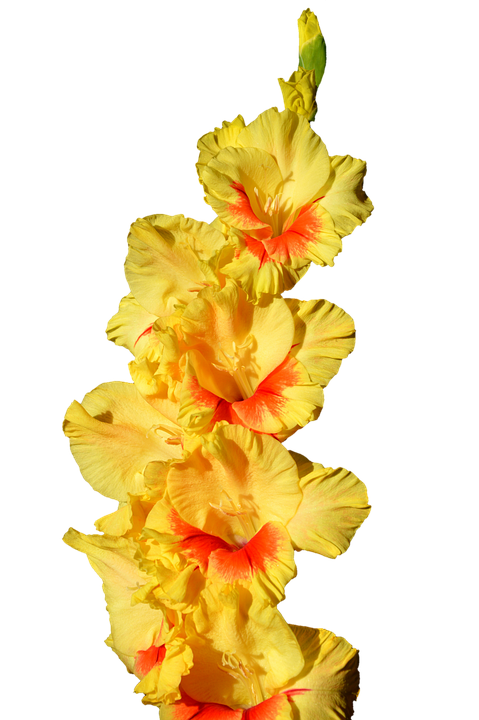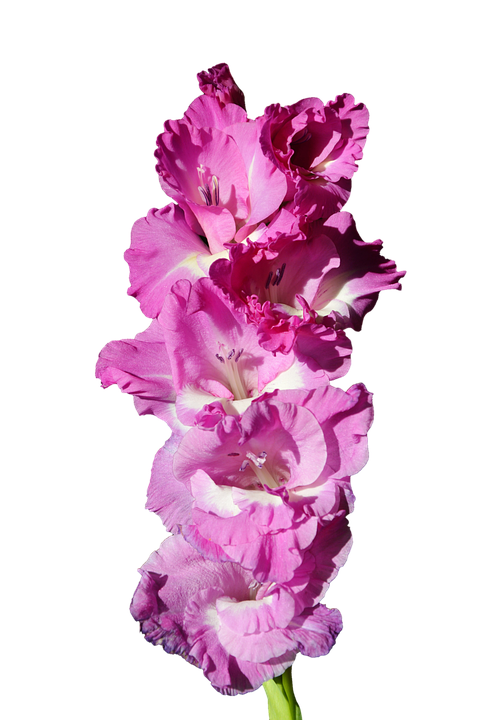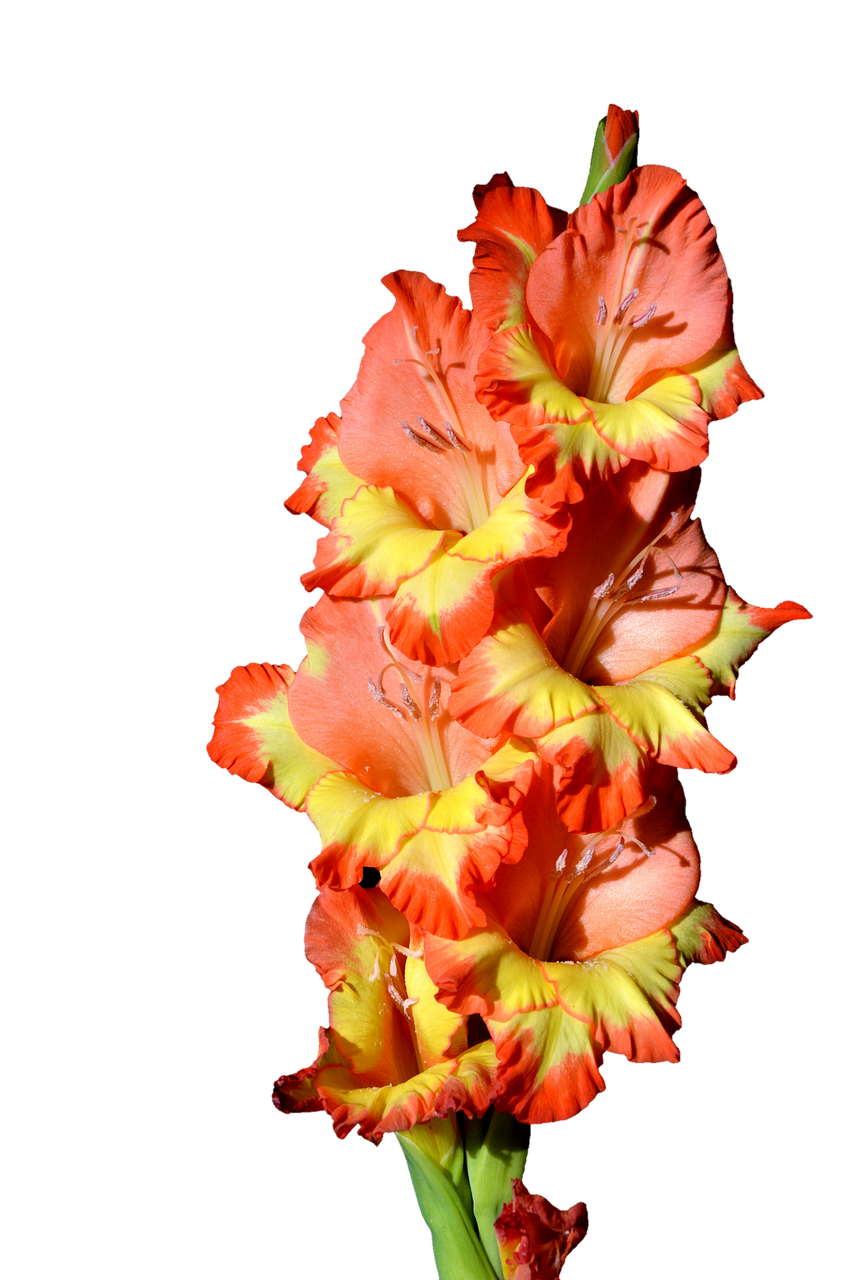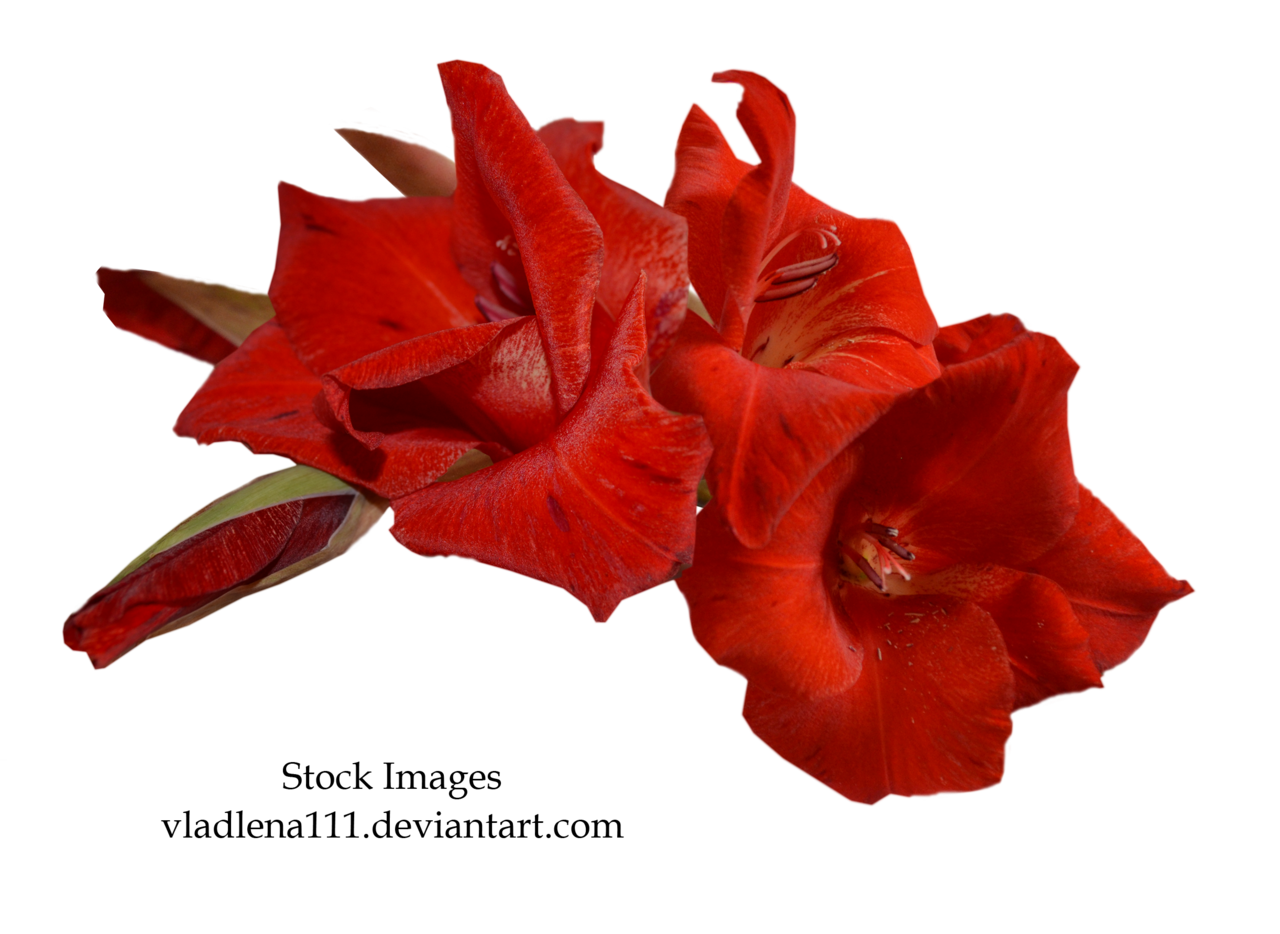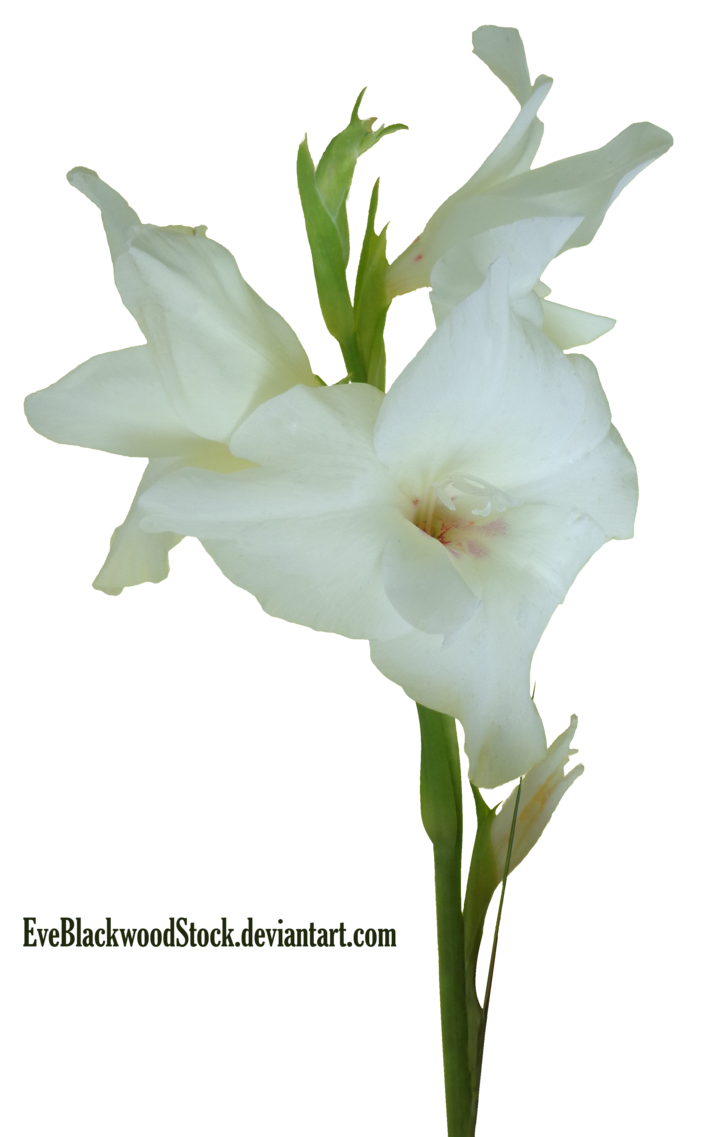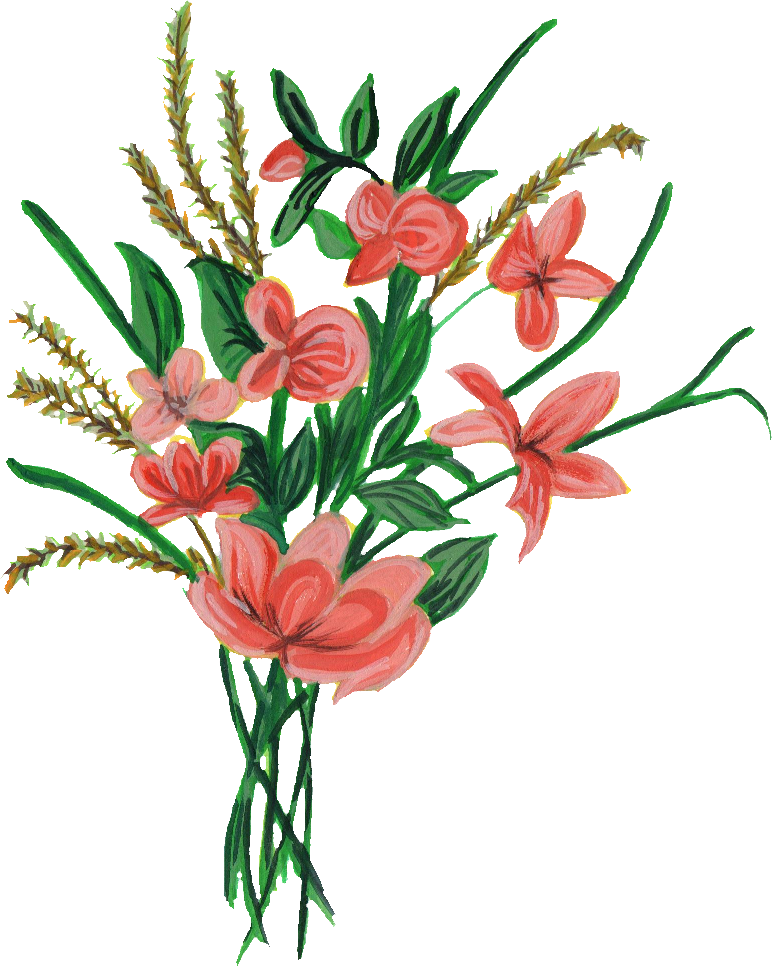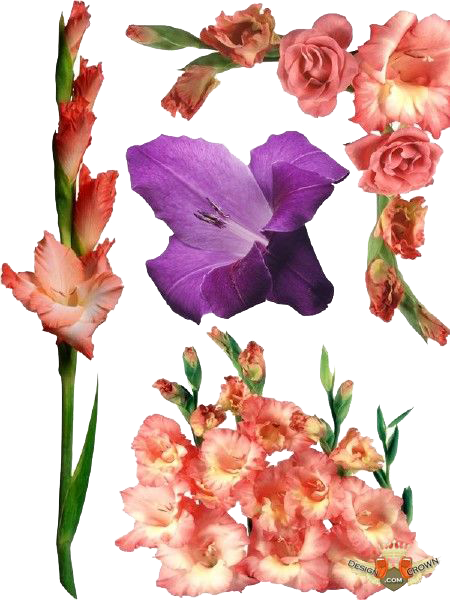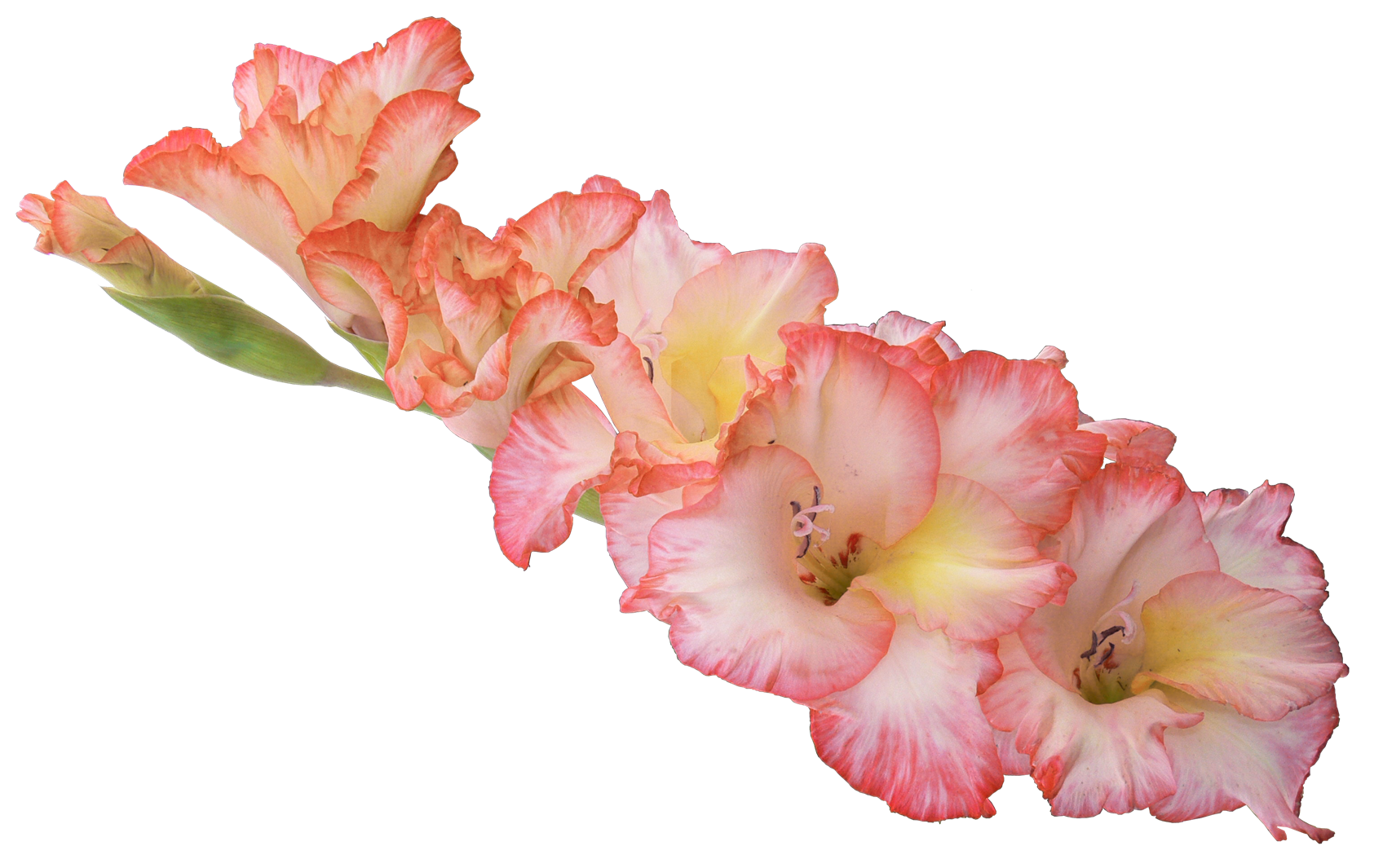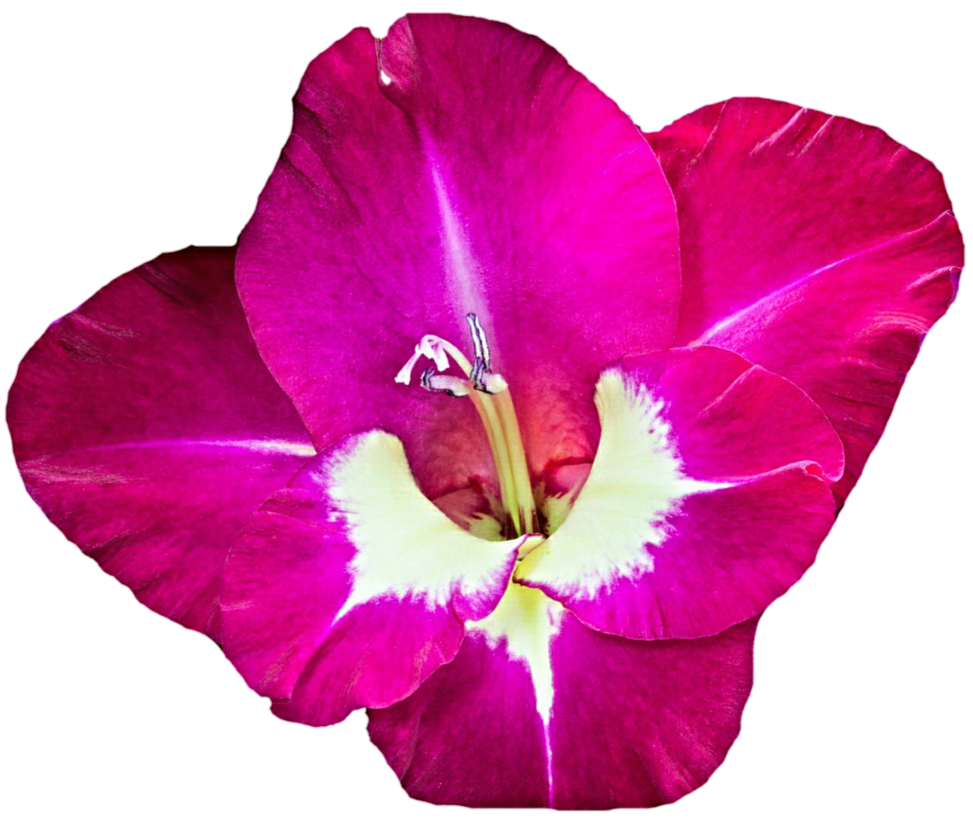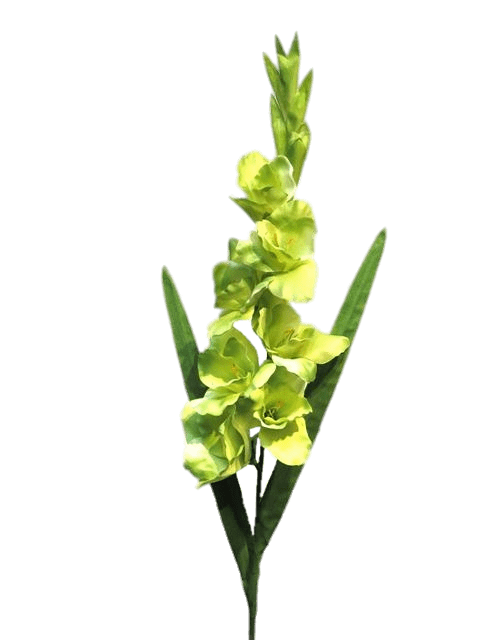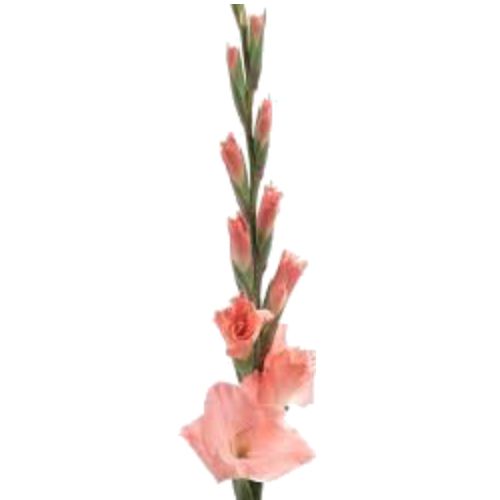Download top and best high-quality free Gladiolus PNG Transparent Images backgrounds available in various sizes. To view the full PNG size resolution click on any of the below image thumbnail.
License Info: Creative Commons 4.0 BY-NC
Gladiolus is a genus of iris-like perennial cormous flowering plants (Iridaceae).
It is occasionally referred to as the’sword lily,’ although it is more often known by its generic name (plural gladioli).
Asia, Mediterranean Europe, South Africa, and tropical Africa are all home to the genus. The Cape Floristic Region is the epicenter of variety. Gladiolus currently includes the previously different genera Acidanthera, Anomalesia, Homoglossum, and Oenostachys.
Gladioli are made up of numerous layers of brownish, fibrous tunics that surround spherical, symmetrical corms (similar to crocuses).
Their stems are usually unbranched, and they produce 1 to 9 slender, sword-shaped, longitudinally grooved leaves that are wrapped in a sheath. The lowest leaf, called a cataphyll, is truncated. The cross section of the leaf blades might be planar or cruciform.
Blooms of unaltered wild species range in size from extremely tiny to maybe 40 mm in diameter, with inflorescences holding one to numerous flowers. Hundreds of years of hybridisation and selection have resulted in the beautiful gigantic flower spikes that are sold today.
The flower spikes are enormous and one-sided, with secund, bisexual blooms held in place by two leathery, green bracts on each side. Tepals are the sepals and petals that are nearly similar in appearance. They form a tube-shaped structure when they are joined at the base. The biggest tepal is the dorsal tepal, which arches over the three stamens. The tepals on the outside are narrower. The stamens are linked to the base of the perianth, which is funnel-shaped. Three filiform, spoon-shaped branches shoot out from the apex of the style.
The ovary is three-locular, with rectangular or globose capsules bearing many winged brown seeds that dehisce lengthwise.
These flowers come in a range of colors, from pink to reddish or light purple with white, contrasting patterns, or white to cream, orange, or red.
Long-tongued anthophorini bees pollinate the South African species, but alterations in the pollination system have allowed pollination by sunbirds, noctuid and Hawk-moths, long-tongued flies, and a variety of other pollinators. Many of the hybrid large flowering gladiolus varieties can be pollinated by little well-known wasps in Europe’s temperate zones. Because of the huge blooms of the plants and the small size of the wasps, they aren’t particularly excellent pollinators. The well-known European Hawk-moth Macroglossum stellatarum, which pollinates many popular garden flowers such as Petunia, Zinnia, Dianthus, and others, is another insect in this zone that may try some of the gladioli nectar.
Download Gladiolus PNG images transparent gallery
- Gladiolus Purple PNG
Resolution: 512 × 512
Size: 32 KB
Image Format: .png
Download
- Gladiolus Purple PNG Pic
Resolution: 512 × 512
Size: 42 KB
Image Format: .png
Download
- Gladiolus PNG File
Resolution: 559 × 581
Size: 70 KB
Image Format: .png
Download
- Gladiolus PNG Image
Resolution: 489 × 720
Size: 328 KB
Image Format: .png
Download
- Gladiolus PNG Photo
Resolution: 800 × 800
Size: 643 KB
Image Format: .png
Download
- Gladiolus PNG Cutout
Resolution: 900 × 509
Size: 292 KB
Image Format: .png
Download
- Gladiolus PNG Images
Resolution: 479 × 720
Size: 306 KB
Image Format: .png
Download
- Gladiolus PNG Photos
Resolution: 479 × 720
Size: 307 KB
Image Format: .png
Download
- Gladiolus Transparent
Resolution: 1024 × 1024
Size: 64 KB
Image Format: .png
Download
- Gladiolus Purple PNG File
Resolution: 800 × 800
Size: 893 KB
Image Format: .png
Download
- Gladiolus PNG Clipart
Resolution: 851 × 1280
Size: 836 KB
Image Format: .png
Download
- Gladiolus PNG Picture
Resolution: 1280 × 934
Size: 904 KB
Image Format: .png
Download
- Gladiolus PNG HD Image
Resolution: 703 × 1137
Size: 363 KB
Image Format: .png
Download
- Gladiolus PNG Image HD
Resolution: 680 × 680
Size: 348 KB
Image Format: .png
Download
- Gladiolus No Background
Resolution: 512 × 512
Size: 11 KB
Image Format: .png
Download
- Gladiolus PNG Images HD
Resolution: 1008 × 1280
Size: 358 KB
Image Format: .png
Download
- Gladiolus PNG Free Image
Resolution: 512 × 512
Size: 22 KB
Image Format: .png
Download
- Gladiolus PNG Image File
Resolution: 512 × 512
Size: 20 KB
Image Format: .png
Download
- Gladiolus Flower
Resolution: 772 × 966
Size: 578 KB
Image Format: .png
Download
- Gladiolus Flower PNG Image
Resolution: 600 × 600
Size: 255 KB
Image Format: .png
Download
- Gladiolus Flower PNG Photo
Resolution: 792 × 2000
Size: 1540 KB
Image Format: .png
Download
- Gladiolus Flower PNG Cutout
Resolution: 450 × 600
Size: 351 KB
Image Format: .png
Download
- Gladiolus Flower PNG Images
Resolution: 1024 × 1309
Size: 1219 KB
Image Format: .png
Download
- Gladiolus Flower PNG Photos
Resolution: 1696 × 1065
Size: 2038 KB
Image Format: .png
Download
- Gladiolus Flower Transparent
Resolution: 600 × 655
Size: 309 KB
Image Format: .png
Download
- Gladiolus Flower PNG Clipart
Resolution: 559 × 581
Size: 94 KB
Image Format: .png
Download
- Gladiolus Flower PNG Picture
Resolution: 640 × 960
Size: 68 KB
Image Format: .png
Download
- Gladiolus Flower PNG
Resolution: 973 × 822
Size: 904 KB
Image Format: .png
Download
- Gladiolus Flower PNG Pic
Resolution: 480 × 640
Size: 39 KB
Image Format: .png
Download
- Gladiolus Flower PNG File
Resolution: 781 × 536
Size: 46 KB
Image Format: .png
Download
- Gladiolus
Resolution: 500 × 500
Size: 100 KB
Image Format: .png
Download
- Gladiolus PNG
Resolution: 1018 × 784
Size: 340 KB
Image Format: .png
Download
- Gladiolus PNG Pic
Resolution: 800 × 2471
Size: 739 KB
Image Format: .png
Download
- Gladiolus Purple
Resolution: 512 × 512
Size: 17 KB
Image Format: .png
Download
